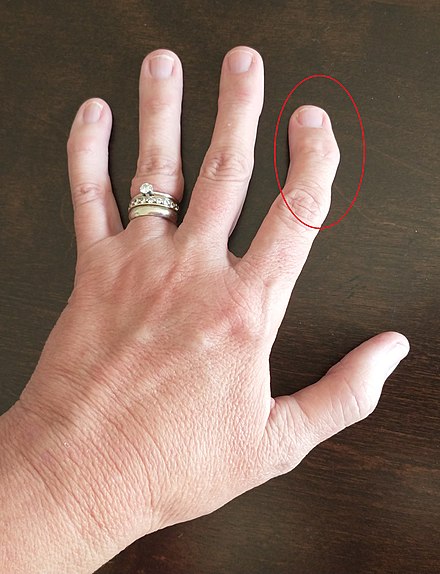Arthritis
Arthritis is a term used to denote disorders affecting joints, characterised by symptoms such as joint pain, stiffness, redness, swelling, and decreased range of motion. Some forms of arthritis can also affect other organs. The onset can be gradual or sudden. There are over 100 types of arthritis, with osteoarthritis and rheumatoid arthritis being the most common.

Signs and Symptoms
Joint pain and stiffness are universal symptoms across all types of arthritis. Other symptoms include redness, warmth, swelling, and decreased range of motion. Certain types of arthritis, such as lupus and rheumatoid arthritis, can affect other organs, leading to diverse symptoms like rash, malaise, fatigue, weight loss, poor sleep, muscle aches, and difficulty using the affected joints. Advanced arthritis can lead to secondary symptoms such as muscle weakness, loss of flexibility, and decreased aerobic fitness.

Diagnosis
Diagnosis is typically made through clinical examination, supported by radiology and blood tests. Key diagnostic features include the speed and time of onset, pattern of joint involvement, symmetry of symptoms, and presence of systemic symptoms. Blood tests may include rheumatoid factor, antinuclear antibodies, and specific antibodies. Imaging tests such as X-rays, MRIs, and ultrasounds are used to diagnose and monitor arthritis.

Types of Arthritis
Osteoarthritis
Osteoarthritis is the most common form and is often age-related. It affects weight-bearing joints like the knees, hips, and vertebral column, and results from the wear and tear of the cartilage. Risk factors include age, obesity, and prior joint injury. In animals, it affects joints such as the hip and knee in dogs.
Rheumatoid Arthritis
Rheumatoid arthritis (RA) is an autoimmune disorder where the immune system attacks joint linings and other tissues, leading to joint erosion and deformity. RA often affects symmetrical joints such as those in the hands and feet. Risk factors include female sex, family history, age, obesity, and smoking.

Other Types
Lupus, gout, psoriatic arthritis, and infectious arthritis are other notable forms. Lupus can cause joint pain alongside systemic symptoms like skin rash and kidney problems. Gout results from uric acid crystal deposition in joints. Psoriatic arthritis often follows a skin psoriasis diagnosis and can lead to joint pain, stiffness, and swelling. Infectious arthritis results from bacterial infection and requires prompt treatment to prevent joint damage.
Treatment
Physical Therapy
Exercise and physical therapy are very important in managing arthritis, improving pain relief, function, and delaying surgical intervention. Exercises focus on muscle strength, endurance, flexibility, and balance.
Medications
Medications vary by arthritis type. Osteoarthritis treatments typically start with acetaminophen, while inflammatory arthritis treatments may include NSAIDs, corticosteroids, and disease-modifying antirheumatic drugs (DMARDs). Topical NSAIDs and intra-articular corticosteroid injections may also be considered.
Surgery
Joint replacement surgery can repair damage, restore function, and alleviate pain in severe cases. Arthroscopic surgery is generally not beneficial for osteoarthritis of the knee beyond optimised physical and medical therapy.
Adaptive Aids and Alternative Medicine
Adaptive aids help manage daily activities for those with hand arthritis. Transcutaneous electrical nerve stimulation (TENS) and low-level laser therapy are alternative methods that may provide pain and stiffness relief. Pulsed electromagnetic field therapy (PEMFT) has tentative evidence for improving function but is not FDA-approved for arthritis treatment.
Epidemiology
Arthritis predominantly affects the elderly but can also occur in children. It is more common in women and affects all races and ethnic groups. In the US, 22.7% of adults reported doctor-diagnosed arthritis, with increasing prevalence expected due to an ageing population. Co-morbid conditions like heart disease and diabetes increase the prevalence of arthritis.
History
Arthritis has been present since prehistoric times, with evidence found in dinosaurs and ancient human remains. Early reports often referred to it as a common ailment. Notable historical accounts include those by William Musgrave and Augustin Jacob Landré-Beauvais, who first described the symptoms of rheumatoid arthritis.
The term "arthritis" is derived from the Greek words "arthr-" meaning joint and "-itis" meaning inflammation. The plural form, "arthritides," denotes the collective group of arthritis-like conditions.
Self-assessment MCQs (single best answer)
What is the most common form of arthritis?
Which type of arthritis is characterised by the immune system attacking the joint linings?
Which of the following is NOT a common symptom of arthritis?
What is the primary risk factor for osteoarthritis?
Which diagnostic tool is NOT typically used for diagnosing arthritis?
Which medication is commonly the first line of treatment for osteoarthritis?
What is the primary treatment goal of physical therapy in arthritis management?
Pulsed electromagnetic field therapy (PEMFT) for arthritis is:
Which of the following statements about rheumatoid arthritis is true?
What percentage of adults in the US reported doctor-diagnosed arthritis?
Dentaljuce
Dentaljuce provides Enhanced Continuing Professional Development (CPD) with GDC-approved Certificates for dental professionals worldwide.
Founded in 2009 by the award-winning Masters team from the School of Dentistry at the University of Birmingham, Dentaljuce has established itself as the leading platform for online CPD.
With over 100 high-quality online courses available for a single annual membership fee, Dentaljuce offers comprehensive e-learning designed for busy dental professionals.
The courses cover a complete range of topics, from clinical skills to patient communication, and are suitable for dentists, nurses, hygienists, therapists, students, and practice managers.
Dentaljuce features Dr. Aiden, a dentally trained AI-powered personal tutor available 24/7 to assist with queries and provide guidance through complex topics, enhancing the learning experience.
Check out our range of courses, or sign up now!


